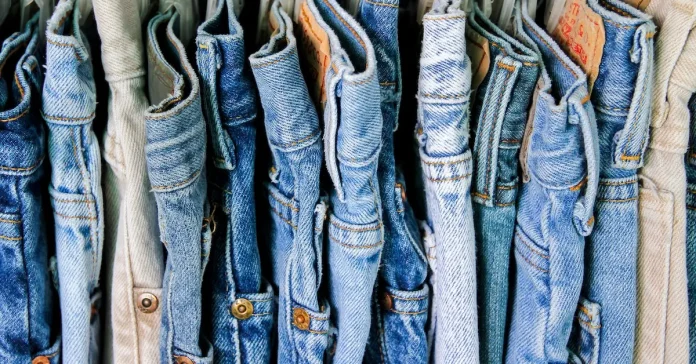Denim jeans are a wardrobe staple worldwide, but have you ever wondered how they are made? A Jeans Manufacturer follows a detailed production process to ensure high-quality denim that meets market demands. From fabric selection to final finishing, every step plays a crucial role in creating durable and stylish jeans. In this article, we’ll take you behind the scenes to understand how a Jeans Manufacturer produces top-tier denim.
1. Sourcing the Best Denim Fabric
The foundation of high-quality jeans starts with selecting premium denim fabric.
A. Choosing the Right Material
A reliable Jeans Manufacturer carefully selects denim based on:
- Cotton composition – 100% cotton for durability or a cotton-spandex blend for stretchability.
- Weight classification – Lightweight (5-10 oz) for comfort, midweight (11-13 oz) for everyday wear, or heavyweight (14-21 oz) for rugged use.
- Sustainability – Many manufacturers now opt for organic or recycled denim to reduce environmental impact.
B. Dyeing and Pre-Treatment
Denim gets its iconic blue shade through indigo dyeing. The dyeing process includes:
- Rope Dyeing – Ensures deep, rich color penetration.
- Sulfur Dyeing – Used for black, grey, or colored denim.
- Pre-Shrinking – Prevents excessive shrinkage after washing.
2. Cutting and Stitching the Jeans
After fabric preparation, the cutting and stitching process begins.
A. Pattern Making and Cutting
A Jeans Manufacturer creates patterns based on the design specifications. The fabric is then stacked in layers and cut using:
- Manual cutting for small batches
- Laser or automated cutting for mass production
B. Sewing and Assembly
Once cut, different sections of jeans (legs, waistband, pockets) are stitched together using:
- Chain stitch for durability
- Flat-felled seams for smooth edges
- Reinforced stitching at stress points (e.g., belt loops and pockets)
3. Adding Special Features and Details
A. Distressing and Wash Effects
To achieve a unique look, manufacturers apply various treatments:
- Stone Washing – Softens fabric and gives a faded appearance.
- Acid Washing – Creates high-contrast fading.
- Whiskering and Ripping – Adds a worn-in, vintage feel.
B. Customization and Branding
High-end Jeans Manufacturers offer branding options like:
- Custom labels and embroidery
- Engraved buttons and rivets
- Personalized leather patches
4. Quality Control and Finishing Touches
Before the jeans hit the market, they go through rigorous quality control.
A. Checking for Defects
Manufacturers inspect for:
- Stitching errors
- Uneven dyeing
- Fit and size consistency
B. Final Pressing and Packaging
- Jeans are pressed and folded neatly.
- They are then packaged with tags and labels before shipping.
Final Thoughts
A Jeans Manufacturer follows a precise and detailed process to produce high-quality denim. From sourcing the best fabric to applying unique finishes, every step ensures that the final product meets customer expectations. Whether you’re starting your own fashion brand or just curious about how jeans are made, understanding the manufacturing process helps appreciate the craftsmanship behind every pair of jeans.



